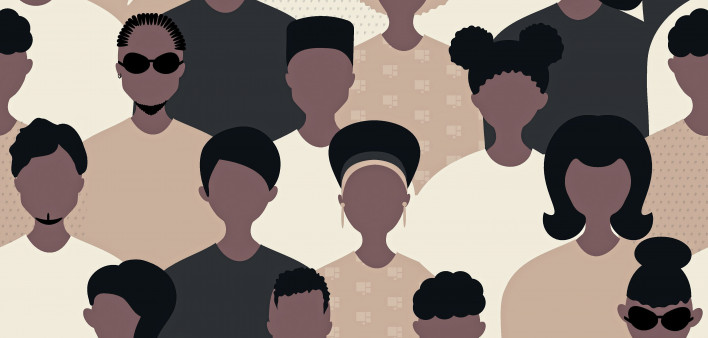Sunday, February 7, marks National Black HIV/AIDS Awareness Day (#NBHAAD) 2021. This year’s theme, “We’re in This Together,” is the same as last year’s and stresses the important role that both individuals and communities can play in ending the epidemic, fighting HIV stigma, raising awareness and promoting prevention, testing and treatment.
In 2019, Black Americans represented 13% of the U.S. population but 43% of all new #HIV diagnoses. For this year’s #NBHAAD, learn about the disproportionate impact of HIV on Black Americans: https://t.co/mTKDgbY8sj pic.twitter.com/v43hYTjtnX
— AIDSVu (@AIDSVu) February 4, 2021
A great way to start is by getting educated and sharing the facts with your friends, family and social networks. Did you know, for example, that in 2019, African Americans represented 13% of the U.S. population but 43% of new HIV cases?
Why is that? According to the most recent data gathered by the Centers for Disease Control and Prevention (CDC) and translated into infographics by AIDSVu, the high HIV rates are related to social determinants of health. These include factors such as poverty, lack of health insurance, income inequality, food insecurity and unemployment.
Two examples illustrate this: a 2018 survey found that 13% of the U.S. populations lived in poverty but that 23% of the African-American population did. Similarly, according to the Department of Agriculture, 11% of the U.S. population experienced food insecurity, compared with 21% of African Americans.
Between 2015 and 2019, there was a 10.3% decrease in new #HIV diagnoses among Black Americans overall. For #NBHAAD, explore AIDSVu and @blackaids’ new resources visualizing the HIV epidemic among Black Americans: https://t.co/mTKDgbY8sj pic.twitter.com/yYnDqRtUaJ
— AIDSVu (@AIDSVu) February 5, 2021
Not all the data are dispiriting. HIV cases among African Americans as a whole dropped 10% between 2015 and 2019. But as AIDSVu writes:
Although this decrease shows an optimistic trend, Black Americans still make up a disproportionate number of new HIV diagnoses in many regions of the U.S. For example, Black Americans accounted for 52% (9,655 cases) of all new HIV diagnoses in the South in 2019. Among the top five states with the highest number of new HIV diagnoses among Black Americans, four are also located in the South: Florida, Georgia, Texas, and North Carolina.
Black Transgender Men and Women continue to be disproportionately impacted by HIV, but the data has often underrepresented that impact due to challenges with accurate and inclusive data collection. According to the CDC, Black Trans Men and Women both accounted for more than half of all people newly diagnosed with HIV among transgender people from 2009 to 2014.
AIDSVu.org has presents HIV data in the form of infographics that are easy to understand and share on social media. You can learn more about HIV among African Americans—and several other minority populations—by visiting the HIV/AIDS Basics on POZ.com and clicking on the “HIV in Specific Populations” section. Search #NBHAAD on social media and you’ll find numerous posts like those embedded in this article.
View this post on Instagram
View this post on Instagram
In related HIV news, see “Racial Justice Index: A New Tool to Combat Racism Within HIV Groups,” “Behind the Partnership to Transform Black and Brown HIV Efforts” and “The Most Important Health Concerns of Black LGBTQ Americans.” For a collection of relevant POZ articles, click the hashtag #African American, and be sure to visit our sister publication RealHealthMag.com, which focuses on Black health and wellness.







Comments
Comments